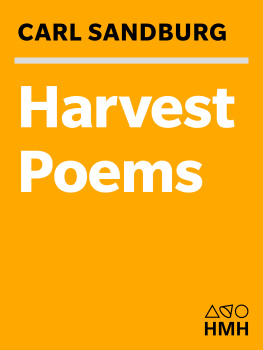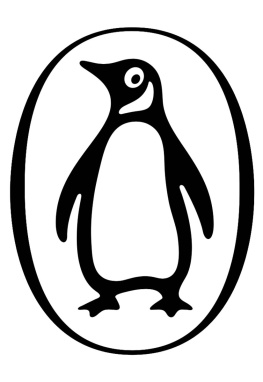Contents
Guide

The author and publisher have provided this e-book to you for your personal use only. You may not make this e-book publicly available in any way. Copyright infringement is against the law. If you believe the copy of this e-book you are reading infringes on the authors copyright, please notify the publisher at: us.macmillanusa.com/piracy. I met Bill Knott in late 1968, or in early 1969, at William Corbetts house, a gathering place for poets in Bostons South End. Id read Knotts highly acclaimed first book, The Naomi Poems, from Big Table, in the spring of 1968.
It was published under the pen name St. Geraud (19401966). I was immediately struck, poleaxed, by the emotional power of the poems. Mostly short, intense lyrics, they were unlike anything Id ever read and moved me to the bone. I felt, before Id read Emily Dickinsons famous comment, as if the top of my head was taken off. Many were love poems.
Most were written in his early and mid-twenties. There was urgency, a longing, a wild and plaintive high-note sound that was maybe particularly attractive to a twenty-two-year-old man. Forty-seven years later, as I stand on the terrible threshold of senescence, Knotts poems still lift the hairs on the back of my neck. His anguished poems about the war in Vietnam were among the first Id read on that subject, and I still believe them to be among the strongest. It is the war that my generation either cant forget or refuses to remember (sometimes both). Unfortunately, he also wrote in one poem that he couldnt see the difference between several prominent American poets and aviators dropping a bomb on Vietnamese women and children.
This was egregiously rude, of course, and flat-out dumb, not to mention self-destructive, and added more to the controversy of early Bill Knott. By December 1970, Knott was living on a couch in the kitchen of the apartment my college roommate and I rented in Somerville, Massachusetts. Sometime in early 1971, he published his second book, Auto-necrophilia, also with Big Table. This was a thinner book than The Naomi Poems. He was flat broke and needed the $800 advanceenough to eat and pay rent for several months. My college roommate and friend, Joseph Wilmott, and I started a small press (Barn Dream Press) around this time.
Between 1970 and 1974, we published two of Knotts books. The first was Nights of Naomi, published in early 1971. By this time, Knott had dropped St. Geraud but, still claiming posthumousness, was now Bill Knott (19401966). The second book, Love Poems to Myself, was published in 1974 under the name he used for the rest of his life: Bill Knott. William Kilborn Knott was born in Carson City, Michigan, on February 17, 1940.
He died in Bay City, Michigan, after failed heart surgery, on March 12, 2014. When he was seven, his mother died while giving birth; the child also died. His father, a butcher, died by drinking poison three years later. Knott told me that he believed his fathers manner of death caused the chronic stomach problems he himself suffered throughout his life. When his father died, Knott was already in an orphanage (for reasons too complex to explain) run by the Loyal Order of Moose, in Mooseheart, Illinois. There, for several years, he was bullied and abused.
He was sent for a year to a state mental hospital, where he was also bullied and abused. His uncle got him out, and he lived on the uncles farm for a few years before he joined the U.S. Army in the late 1950s. He served his full enlistment and was honorably discharged in 1960. A great deal of his service time was spent guarding our nations gold reserves at Fort Knox. He liked to say the greens and fairways of the officers golf course were always dry and snow-free in winter, the heat from the bullion in the vaults beneath keeping them so.
The last time he saw his younger sister, Joy, was when she graduated from the orphanage at nineteen. He had a niece and nephew he never met. By the early 1960s, Knott was living in Chicago and working as a hospital orderly. He took a poetry workshop taught by John Logan, and a little later worked with Paul Carroll, editor of Big Table Books. Some of the poets in Chicago who knew Knott at the time were Charles Simic, Kathleen Norris, Dennis Schmitz, Naomi Lazard, and William Hunt. In 1964, James Wright received a letter from Kenneth Rexroth asking if Wright could recommend some younger poets to him.
Wright wrote back about an unmistakably beautiful, deeply fertile, unaffected, marvelous poet, a young man of about 25 years of age who has the wonderfully unpoetick name of Bill Knott. Enough has been said about a letter Knott wrote to a magazine, in 1962 or 1963, under a fictitious name, saying that Bill Knott was dead and died a virgin and a suicide. It was despair and a youthful affectation. And let literary history acknowledge this obvious fact: Being a young poet, particularly a young male poet, is almost a disease, a cement mixer of joy rip-sawed by a realistic sense of the impossibility of the task! Knott said he used St. Geraud as a pen name because even though he was honorably discharged from the army, he never reported for reserve duty and thought the army might track him down and make him return to active duty. When he told me this, I remember thinking: Of course, the army has a special unit scouring first books of poetry looking for reprobates like Bill.
When asked, years later, why he used a pen name, he said it was because two poets he admiredPablo Neruda and Paul luardwere pen-named poets, and that made him feel justified. We should look at the pen name in a similar manner as the fake suicide letter: So what! St. Geraud, by the way, was the name of a character he lifted from a nineteenth-century pornographic novel, the kind in which it takes forty pages to get the top button of a womans blouse unbuttoned. I thought one of Knotts reasons for insisting that his name include (19401966) made some odd sense: He believed all Americans, not just combatants, were casualties of the Vietnam War, because, as Americans, we all shared the responsibility for and were all wounded by that illegal and immoral war. Hyperbole, of course. He knew where the real blame lay: there are the destroyersthe Johnsons, Kys, Rusks, Hitlers, Francosthen there are / those they want to destroylovers, teachers, plows, potatoes.
Wilmott and I started Barn Dream Press with little money during our last semester of college. Wilmott went into the printing trade, and we published, during a four-year run, several broadsides, chapbooks, and three full-length books, by poets such as William Matthews, Charles Wright, Marvin Bell, Paul Hannigan, William Corbett, Helen Chasin, and Michael Palmer. We started working on Knotts book Nights of Naomi in the fall of 1970. I was hired as a night watchman at a local college, which provided two meals a day and pilferable lightbulbs and toilet paper: I had the keys to everything. It was around this time that Knott lived on a couch in our kitchen for a few months. Id get home about 1:00 a.m.
Knott would invariably be watching old movies on two black-and-white TVs, a smaller one on top of a larger one. He got up constantly to change the channel on one or the other, while keeping the sound on only one TV. By late January of 1971, Knott had moved to an apartment deeper into blue-collar Somerville. Nights of Naomi was printed by letterpress on fine watermarked paper in an edition of 1,000 copies: 874 bound in blue paper, 100 hardbacks bound in dark blue boards numbered and signed, and 26 hardbacks lettered AZ signed with a personal inscription by the author. Typical: Larry, thanks for bailing me out of jail that night in Albany. Neither had Larry bought the book nor had Knott spent a night in jail in Albany.













 The author and publisher have provided this e-book to you for your personal use only. You may not make this e-book publicly available in any way. Copyright infringement is against the law. If you believe the copy of this e-book you are reading infringes on the authors copyright, please notify the publisher at: us.macmillanusa.com/piracy. I met Bill Knott in late 1968, or in early 1969, at William Corbetts house, a gathering place for poets in Bostons South End. Id read Knotts highly acclaimed first book, The Naomi Poems, from Big Table, in the spring of 1968.
The author and publisher have provided this e-book to you for your personal use only. You may not make this e-book publicly available in any way. Copyright infringement is against the law. If you believe the copy of this e-book you are reading infringes on the authors copyright, please notify the publisher at: us.macmillanusa.com/piracy. I met Bill Knott in late 1968, or in early 1969, at William Corbetts house, a gathering place for poets in Bostons South End. Id read Knotts highly acclaimed first book, The Naomi Poems, from Big Table, in the spring of 1968.